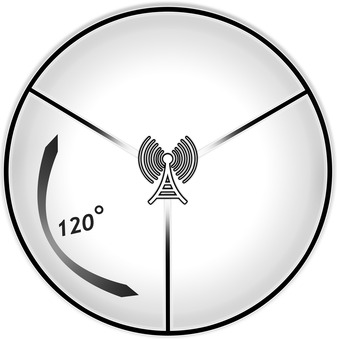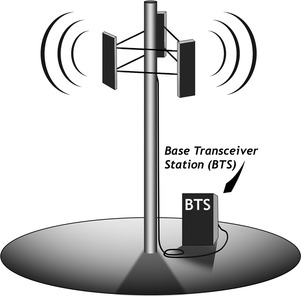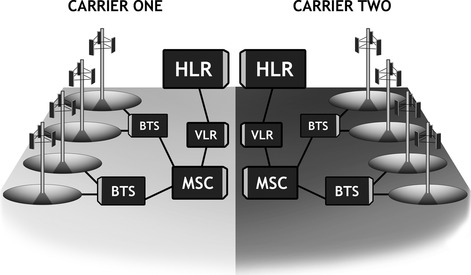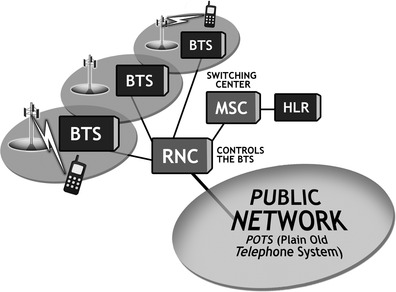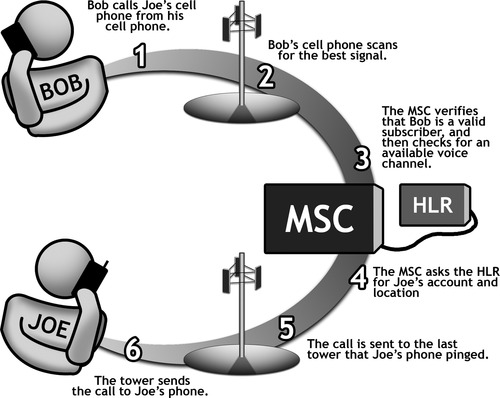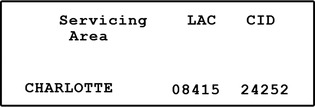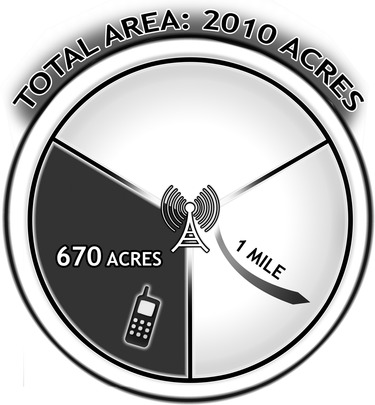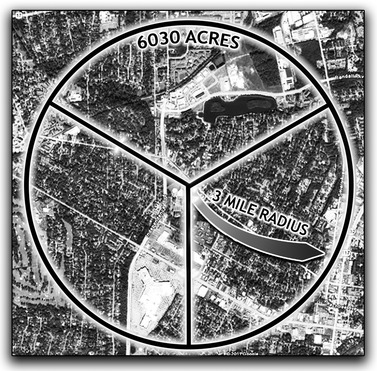Chapter 33. Cellular System Evidence and Call Detail Records
Information in this chapter:
• An overview of the cellular phone system
• How cell phones work
• Call detail records
• Call detail records as evidence of cell phone location
• Enhanced 911 wireless location services
• The E911 system overview
• Emergency situations: Real-time cell phone tracking
Call detail records are coming into play more often in cases every day. The purpose of the call detail records is to attempt to place the cell phone user in a geographical location based on the tower used by the cell phone to send or receive a phone call, text message, or Internet data connection. This kind of evidence is fraught with potential misunderstanding by courts and juries alike and should be treated accordingly. This chapter gives an overview of cellular systems and looks at how the evidence is viewed in many cases.
Keywords
Cell Tower, Call Detail Record, CDR, Mobile Switch, E911
Introduction
Call detail records are coming into play more often in cases every day. The purpose of the call detail records is to bill customers for cellular usage. However, they are also being used in court to attempt to place the cell phone user in a geographical location based on the tower used by the cell phone to send or receive a phone call, text message, or Internet data connection. This kind of evidence is fraught with potential misunderstanding by courts and juries alike and should be treated accordingly.
The purpose of the cellular network is to allow cellular phone companies to provide wireless phone calls and data transfer at the least expensive cost in terms of infrastructure, power usage, and coverage area. The cellular system was not designed to locate cellular phones beyond simply knowing if a cell phone can be reached to connect a call. In other words, cellular mobile phone networks are optimized for capacity and call handling, not for location of cellular phones.
33.1. An overview of the cellular phone system
The cellular phone system is part of the regular telephone system or Plain Old Telephone System (POTS), which provides the public telephone system we all use every day.
The cellular system is equipment that has been added to the POTS network to accommodate wireless voice and data calls.
The system is made up of cell towers, base transceiver stations (BTS), Mobile Switching Centers (MSC), radio network controllers (RNC), and the home and visitors (roamers) location register. Figure 33.1 shows a cell tower with antennas in a three-sector configuration.
A cell tower normally covers an area that is roughly circular in shape and can be divided up into sectors. Figure 33.2 shows a top-down view of a cell tower divided into three sectors. In a call detail record, each sector will be numbered so the sector can be identified. The sector number will be the first number in the cell tower ID.
At the base of every cell tower there is a base transceiver station (BTS) that processes and handles local radio communications with cellular phones and facilitates communication between the wireless network and the landline network. The tower, antennas, and base transceiver station make up a cell site. Figure 33.3 shows a cell tower and BTS that make up a cell site.
The base transceiver station (BTS) is connected via landline to a radio network controller (RNC). The RNC manages several base transceiver stations. The radio network controller is connected to a Mobile Switching Center. Each Mobile Switching Center (MSC) manages the cell towers in a single coverage area. One or more Mobile Switching Centers make up a location or market area.
Figure 33.4 shows all of the pieces connected together into a functional wireless network.
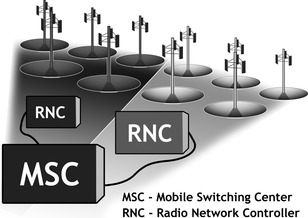 |
| Figure 33.4 |
The Home Location Register (HLR) is a large database that permanently stores data about subscribers. The HLR maintains subscriber-specific information such as the individual cell phone, and the SIM card identifies the current location of the cell phone, roaming restrictions, and subscriber-supplemental features for each phone that belongs to the wireless carrier. There is logically only one HLR in any given network, meaning that there is only one master HLR database, but generally speaking, each network has multiple physical HLRs spread out across its network to account for hardware failures.
The visitor location register (VLR) is a database that contains the same type of information located on the HLR, but only for subscribers currently in its Location Area. There is a VLR for every system to store the information about a mobile phone that is roaming in the system.
Figure 33.5 shows the cellular systems for two wireless carriers side by side. If a subscriber of Carrier 1 calls a subscriber on Carrier 2’s system, the call must go first to the home location register for Carrier 1. Carrier 1 will recognize that the subscriber belongs to Carrier 2 and will contact Carrier 2’s HLR to locate the phone to make the call.
Figure 33.6 shows a cellular system with all the parts in place.
33.2. How cell phones work
A cell phone is basically a two-way radio and communicates with cell towers via radio signals. When a cell phone is turned on, it registers with the cellular system by contacting the cell tower with the strongest signal, which may or may not be the closest tower. This allows the cellular system to know how to find the cell phone in case the system needs to route a call to the phone. Records of this process are not part of a call detail record since this is not a billable transaction. In most cases, these registration pings are only present for a few hours and are not recoverable after the fact.
At this point, the cellular system knows the tower location of the phone, which market it is in, and whether or not the phone is a “registered” phone. In other words, a registered phone is one that has an active account and can receive calls or make calls.
Once the phone is turned on and operating, it will periodically “ping” the tower with the strongest signal to maintain its registration so the system can locate it for incoming calls.
These registration pings are recorded in the equipment located at the individual cell towers and are maintained for a very short length of time, normally less than 48 hours.
33.2.1. Anatomy of a Cell Phone Call
This is a simplified description of how cell phones communicate using the cellular system.
When a person dials a number on his or her cell phone and presses the “Send” button, the phone will attempt to place the call via the cell tower with the strongest signal at that point in time, and the cellular system equipment will begin call processing.
Every cell tower is connected to the phone system via landlines. The call is actually sent along these landlines to the local market Mobile Switching Center and then via landline to the central telephone switching center where the number is looked up using the home location registration database.
If the number dialed is a landline phone, then the call will traverse the landline telephone system and ring at the landline address.
If the phone is another cellular phone, then the call will still traverse the phone system via landlines to the local market Mobile Switching Center, to the central market switching center, and then to the local market Mobile Switching Center of the dialed phone, and finally to the cell tower that the phone has registered with, and finally to the phone itself.
Figure 33.7 shows this process in diagram form.
Once the call is attempted, one of several things can happen:
1. The person answers the cell phone using the cell phone handset that was dialed. This is a completed call. The dialed digits and the phone number on the call detail record will match.
2. The person does not answer the cell phone. This is a call attempt.
4. The cellular number dialed has been forwarded to another number, which can be another cell phone or a landline, and the forwarded number is answered; however, the dialed digits and the answered phone number will not match since the dial phone was answered by a different number. This is a completed call.
33.3. Call detail records
It is important to remember that cellular service providers use derived information in call detail records for use in their billing, coverage, and analytics.
Call detail records are a potential form of evidence, but the claims made based on them are often overstated when they are used as evidence. Knowing the merits and limitations of call detail records is critical when bringing them to bear in a case. Call detail records need a significant amount of supplementary information to be of most use, such as the maintenance records or trouble tickets of the cell towers referenced in the call detail records, information about the configuration of cell towers of interest, and the radio frequency maps, if available, for the cell towers. These and other factors must be taken into consideration and dealt with if an examination of call detail records is to be performed comprehensively and correctly.
33.4. Call detail records as evidence of cell phone location
One of the most important things to remember is that a cell phone cannot be located from a historical call detail record. The best that can be done is that the phone can be placed in a general area corresponding to a cell tower that was connected to the phone at a particular time when a call was made or attempted.
What the call detail record report contains varies by carrier; however, they will usually supply the following information for each call attempt:
• Date: The date the call was attempted or received
• Time: The time the call was attempted or received
• Number called: The number called or calling depending on the direction of the call
• Usage type: Voice, Data, SMS, MMS
• Call duration: In minutes or seconds
Figure 33.8 shows the portion of a call detail record containing the date, time, and number called. This kind of information is part of what is used to perform an analysis of call detail records by providing the timeline information for an incident.
Once it is established that the date and times of phone calls in the call detail record correspond with the timeline in a case, the next step is to get the cell tower identifier from the call detail record.
Figure 33.9 shows the part of the call detail record that contains the cell tower identification number or CID. Note that carriers use different abbreviations for the cell tower ID. Some use terms like SZR or other designations for the tower IDs.
The cell tower ID (CID) in this case is a five-digit number. The first number is the sector of the cell tower and the last four digits are the cell tower ID number.
Using this information, a call can be associated with a particular cell tower and sector of a cell tower. This is done by matching the cell tower ID from the call detail record with the cell tower ID on the list of tower locations that should always be supplied with any subpoena request for call detail records. Requesting call detail records is covered in Chapter 24. Figure 33.10 shows a portion of a cell tower location report with the geolocation information for the towers. By matching the cell tower IDs from the call detail records with the tower IDs in the cell tower location report, you can determine the geolocation of the tower using the latitude and longitude for the tower.
33.4.1. A Cell Tower Location Example
The coverage of a cell tower is normally discussed in terms of its radius. A cell tower with a 1-mile coverage radius is equal to 3.14 square miles or 2010acres.
If a cell phone is connected to one of the three sectors, the area that the cell phone can be in is one-third of the total coverage area, or in this case, 670acres.
One way to think of this is to imagine a subdivision with houses on one-acre lots covered by one sector of the cell tower. If a cell phone is “located” in that sector, it could be in any of the 670 houses. Or if the cell phone is traveling on a road adjacent to the subdivision, it could be in none of the houses at any time. At best, this kind of evidence is circumstantial as to the location of a cell phone at any particular time.
That would be the closest you can get in locating the cell phone in that subdivision. Figure 33.11 shows a diagram of a cell tower coverage area. You’ll notice that the diagram is divided into three sectors, with the top pie slice at the top. This would be a tower with a northern orientation. In this case, the sectors would be numbered starting at the top and going clockwise. This means that the north sector would be identified as 1, the southeast sector as 2, and the southwest sector as 3.
If the cell tower has a three-mile radius, then you can triple the numbers above. Now the subdivision would contain 6030 houses. The cell phone could be in any of them or none of them at all. Figure 33.12 shows a cell tower plot over a Google Earth Pro map. This is one common method that is used in court to show that a cell phone is in an area. If you study the map in Fig. 33.12, it is not hard to see that the best location you can get in this case is somewhere in one of the very large sectors drawn on the map.
33.5. Enhanced 911 wireless location services
With the development of the Enhanced 911 system (E911), it is possible to locate a cell phone with varying degrees of accuracy and success depending on the level of E911 services available in the locality.
By the end of 2005, wireless telephone carriers were required to comply with the Federal Communications Commission regulations for the E911 system.
33.6. The E911 system overview
With the advent of wireless technology, a system had to be implemented that could handle the location of a wireless caller when he or she dialed 911.
The purpose of the E911 system is to provide enhanced information to emergency services personnel when a caller dials 911. These enhancements include the number calling, the address of the caller, and the ability to call the caller back if they should hang up.
Figure 33.13 gives a visual overview of the E911 system. The PSAP operator may update the location on demand. It is not automatic.
However, the reality of it is that the E911 system is not fully implemented in all areas due to several factors, including geographic considerations and lack of cell towers that would make accurate location of a cell phone impossible. If the E911 call is a Phase 1 call, all the wireless carrier is required to provide is the calling number, and the location of the cell tower. This means that the call location can be anywhere in the overall sector of the cell tower coverage area. As shown earlier, a single sector of a cell tower coverage area can be very large, especially in rural areas.
If the E911 call is a Phase 2 call, then there is a good likelihood that the cell phone location will be accurate to several hundred feet.
Even though the Public Safety Answering Point (PSAP) may be able to receive location information, the ability to handle the information is not consistent throughout the system. In one case in Tennessee, Germantown dispatchers were unable to locate a cell phone from the location information even though the information was transmitted to the PASP dispatcher.
Neither a veteran Germantown (Tenn.) public safety dispatcher or her supervising lieutenant followed up on a 911 call where at least 10 gunshots were audible because they had no way to look up the latitude and longitude of the call, and both believed—mistakenly—that department policy did not require them to dispatch an officer to a call with no location and no person’s name. The 911 call received by dispatcher Claudia Woods on July 19th was later linked to the murder of former NBA player Lorenzen Wright, whose body was found a week later about a mile and one-half from the coordinates displayed on Woods’ ANI/ALI screen. In transcripts of interviews with Woods, Lt. Donald Taylor, and dispatchers Richard Frederick Jr. and Chris Rowlson, the communication center personnel told investigators they followed departmental policy, and believe they did everything they could, given their training and the availability of computer systems. Woods was interviewed by Germantown police Insp. Danny Payne as part of an internal investigation, and said the location of the cellular phone wasn’t plotted on her computer mapping screen. Sources say she heard gunfire, but that detail was redacted from the transcript. Woods said the call ended and she dialed the number back and heard only a generic voicemail greeting. The latitude and longitude of the call was displayed, but Woods told Payne, “We didn’t have the equipment to plot it.” Even though she heard gunfire and a latitude and longitude was displayed, no officers investigated the call. It was forgotten until 10 days later when investigators linked the call and Wright’s disappearance. Police reportedly used the cell phone signal to find Wright’s body in a field 10 days after the 911 call.1(Emphasis by author)
33.7. Emergency situations: Real-time cell phone tracking
In an emergency situation where a person is in immediate danger, the E911 system can be activated to locate the phone, providing that the phone is turned on and in an area where the phone can receive a cellular signal.
Summary
In this chapter we looked at how call detail records and cell phone location works, both as historical data analysis and via the E911 system. We discussed the makeup of the wireless phone system and how cell phones work within the wireless system.
We also discussed the content of call detail records and the methods used to attempt to provide location information for a cell phone from those records. The reality of attempting to locate cell phones via historical call detail records is suspect at best and highly inaccurate in worst-case scenarios. Beware of this type of evidence being used to pinpoint the location of a person via these records unless they dialed 911 from the cell phone and the local E911 system is fully implemented for accurate location services.
Reference
[1]
..................Content has been hidden....................
You can't read the all page of ebook, please click here login for view all page.


